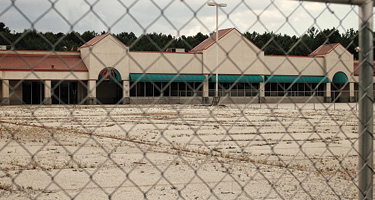In New Orleans affordable housing is currently a hot-button political issue that impacts many different aspects of the real estate world. Savvy developers and landowners should maintain a working knowledge of affordable housing policies, programs and regulations, which can present both incentives for and obstacles to development and land use. This article surveys recent regulations, programs and proposals related to affordable housing in New Orleans.
Affordable Housing – Background
The U.S. Department of Housing and Urban Development considers housing “affordable” if renters pay less than 30% of their income on rent and utility payments or if homeowners pay less than 30% of their income on the mortgage, utilities, property taxes and insurance combined.
In 2015, HousingNOLA identified a need for approximately 33,600 new affordable housing units in New Orleans by 2025. Only around 1,600 such units have been created to date. To that end, both the number of affordable housing units and the number of vouchers issued for affordable housing deceased in 2019 compared to previous years.
The cost of a single-family home in New Orleans also increased by 46% from 2005 to 2015, according to the New Orleans Metropolitan Association of Realtors, and median home values have increased further from 2015 to date. The assessor’s 2019 revaluation of property for purposes of tax assessments also caused many owners’ tax bills to increase significantly, putting additional pressure on housing affordability.
Political actors have responded to the above by promoting affordable housing in various ways.
Inclusionary Zoning Ordinance
In March and August 2019, the City Council passed a package of inclusionary zoning rules based on the “Smart Housing Mix” study by the City Planning Commission. The ordinances require developers of certain types of projects to build lower-cost units as part of any larger multifamily residential development. Specifically, the rules currently require a developer building a “planned development” (a development specifically authorized by the City Council) with 10 rental units or more to make 10% of those rental units available to people who earn 60% of the area median income or less. The requirement also applies to units for sale. The affordable units must be comparable to the market rate units in terms of area, bedroom mix, amenity access and some finishes. The rules apply to new construction as well as renovations and condominium conversions. The requirements “run with” the development for 99 years and are not subject to a variance.
The new rules for planned developments also include incentives that developers can use to help offset losses related to the affordability requirement. Specifically, planned developments subject to the affordable housing requirements are entitled to up to a 30% reduction in the lot area per dwelling unit requirement. Further, if a development where affordable housing is required is within 600 feet of a public transit stop, the developer can reduce the per-unit parking requirement by 50%.
The inclusionary zoning rules also reference Mandatory Inclusionary Zoning Sub-Districts within several of the general zoning districts (including Historic Core, Historic Urban and Central Business), but they do not map out the boundaries of these sub-districts. In early 2020, the City Council instructed the City Planning Commission to consider the map amendments needed to make the rules applicable to these Mandatory Inclusionary Zoning Sub-Districts effective. Once these sub-districts are designated, all developments of 10 or more residential dwelling units (rental and ownership) within the sub-districts will be required to comply with affordable housing requirements specific to the sub-district (generally 5-10% of units must be made affordable to families earning no more than 60% of area medium income).
The minimum lot area per dwelling unit for most of these sub-districts is modified along with the affordable housing requirement to provide a density benefit, and they may also be allowed a 10-30% parking requirement reduction. Most of the other rules described above that apply to planned developments will also apply to the sub-districts once they are designated.
In addition to the mandatory rules for the sub-districts, the new regulations also allow any developer to voluntarily opt-in to provide the same affordable housing in exchange for incentives, such as a 30% reduction in minimum lot area per unit, 30% increase in floor area ratio and 10-30% reduction in required parking. On the other hand, the rules also provide for an optional fee-in-lieu that developers can pay in order to avoid complying with the affordable housing requirements. The fee will be determined by a per-unit fee schedule and will go toward efforts to procure affordable housing.
Short Term Rental Restrictions
In August 2019, the City Council enacted stricter short-term rental regulations, which was in part an effort to increase housing stock available to local residents. Now, in most residential areas, a homestead exemption is required in order to obtain a short-term rental permit. In commercial areas, such as the Central Business District, a homestead exemption is not required, but short-term rental permits can only be issued for 25% of the units on any lot or building.
Read more about the new short-term rental regulations>>
Some of the taxes on short-term rentals will also go toward affordable housing efforts, including the City’s Neighborhood Housing Improvement Fund.
Property Tax Breaks
In the fall of 2019, statewide voters denied Mayor LaToya Cantrell’s attempt to obtain authority for the City to exempt properties with 15 residential units or less from taxes in order to encourage more affordable housing. However, a separate bond proposal that authorized a $500 million capital improvement bond sale, a portion of the proceeds of which may be used for affordable housing, did pass.
In early 2020, the City Council approved a revision to the City’s local policy with respect to the State’s Restoration Tax Abatement program. The new policy allows developers to automatically renew their tax abatement contract for an additional five years (for a total abatement period of ten years) if the project complies with the City’s inclusionary zoning policy, described above.
The Council also authorized the City to enter into a cooperative endeavor agreement allowing the Finance Authority to manage payments in lieu of taxes to incentivize affordable housing and to charge lower fees for the applications to encourage development. You can read about the Restoration Tax Abatement Program and PILOTs at the following link.
Restoration Tax Abatement Program and PILOTs>>
Funding
In July 2019, New Orleans received nearly $3.4 million in Low-Income Housing Tax Credits and $24.5 million in Community Development Block Grants through the Louisiana Housing Corporation Piggyback program, which supports new construction and renovation of multifamily housing. These credits and grants will be issued to private developments and residents and are estimated to produce 642 affordable residences, according to the City.
The Housing Authority of New Orleans Housing Choice Voucher Program, which provides Section 8 vouchers to eligible families, currently administers more than 17,000 vouchers and has a waiting list of 20,000 families. Its Project-Based Voucher Program subsidizes units in privately owned properties throughout New Orleans by paying the balance of housing costs after the eligible tenant pays 30% of their income for rent and utilities. Landlords can learn how to apply for HANO programs at the following link.
Other Ideas
The City Council recently raised the possibility of “tiny” homes (typically 400 square feet or less) as one solution to the affordable housing problem. This may require modifications to existing lot and dwelling size rules. In August 2019, Mayor Cantrell asked the City Planning Commission to study the tiny house option and other ways to create more affordable housing, including how to encourage development of vacant and blighted property.
The Crescent City Community Land Trust is also presenting affordable housing options through the community land trust model, where the trust owns the land but the homeowner owns the home and has a 99-year ground lease, all subject to requirements that help keep the property permanently affordable.
The affordable housing space may present opportunities for growth for those who are creative and informed. Check out the links below for more information on affordable housing issues, incentives and restrictions.
City of New Orleans Office of Community Development>>
New Orleans Redevelopment Authority>>
Access top-rated attorneys through the Best Lawyers Find a Lawyer tool to help with your legal matters.
















